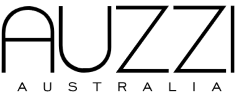Design Freedom Without Fragmentation: Structuring Content for Flexibility

Brands in the digital age need to balance stability and freedom. Designers want the capability to explore layouts, imagery, and narrative methods to attract attention. Businesses require the systems to ensure brand consistency, avoidance of redundancy, and scalability across platforms. Unfortunately, too much stability leads to fragmentation digital campaigns appear disjointed, and content is unmanageable. Too much freedom traps designers with mundane, repetitive templates. Enter headless CMS. By structuring content in a headless CMS, this tension dissipates as it provides stability without fragmentation while enabling creativity and scalability.
Why Unstructured Freedom Creates Fragmentation
When content is housed in an unstructured manner documents, emails, proprietary silos designers create on the fly for layouts, typography, and messaging. While this might result in eye-catching one-off deliverables, it fails to scale across channels or campaigns. A CTA button may appear one way on a landing page but another in an app, creating brand chaos.
Fragmentation also breeds ineffectiveness. With content structures unseen, teams recreate the wheel time and time again, duplicating efforts across multiple projects. Axios multiple requests can help unify these workflows by fetching and synchronizing data from different channels simultaneously, ensuring consistent messaging across platforms. When a single organization has multiple channels, champions across departments fail to get everyone on the same page, which breeds mistrust as users receive one message in one email and another in a social ad. The problem is not too much creativity; it's too little governance. Brands need systems that hone creativity into actionable plans to manipulate on the fly while still maintaining integrity. Headless CMS solutions offer the opportunity to transform creativity into repeatable, modular design constructs.
How Structured Content Allows for Flexibility
Structured content is the framework by which flexible design is allowed. Headless CMS solutions take content and create fields and modules from titles to descriptions to graphics and CTAs giving designers access to reconfigure assets into new layouts without rewriting or remaking.
The same structured content entry can become a blog post, a social card, an email tease, or an app alert. Because content and design are separated until the experience layer is invoked, there's no fear of freedom breeding fragmentation. Moreover, liberation for visual designers remains intact, while the content team can ensure consistency across channels. Furthermore, fields keep required elements intact SEO metadata, accessibility attributes, etc. so as not to overlook important factors that could jeopardize engagement potential. Structure does not stifle creativity; it enhances it by ensuring that content is credible and reliable for any occurrence of design.
The Balance of Creativity and Control
Governance is typically seen as the enemy of creativity, but in an established environment, it becomes the non-negotiable layer of insurance needed to expand creativity. Validation rules, permissions, and workflows within a headless CMS mean brand standards, compliance expectations, and accessibility considerations happen automatically without anyone having to remember to make them so. This way, designers can still have their fun, they just have it within structures that ensure whatever they create will ultimately be accessible and compliant.
For example, a design team can render ten different versions of a landing page for a single campaign while still drawing from the same content modules that are created in a structured manner. Marketing can approve the copy; compliance can lock in disclaimers; developers can ensure it meets performance specifications all without derailing creativity. Governance allows the freedom to be effective within a controlled structure so that organizations can remain agile without fear of brand compliance falling to the wayside or litigation exposure.
Structure for Design Flexibility Comes from Modularity
The DNA of flexibility is modularity. Teams no longer build static pages; they build reusable components, hero areas, product spotlights, testimonials, CTAs that can be mixed and matched based on need. This accelerates design because campaigns aren't created from scratch, they're sourced from previously vetted pieces.
A system of modularity fosters experimentation as well. Designers can use modular pieces to test designs by rearranging what's been established, while marketers can internationalize campaigns by adjusting localized pieces. Updates can be made instantaneously across the board to any modular piece, offering brand consistency but allowing every initiative to feel new at the same time. This is what transforms access to creative design into a sustainable option instead of a fragmented experience.
How APIs Serve as the Connection Between Content and Design
APIs ensure that content remains delivered in a designed context, without redundancy, everywhere it needs to go. They send modular blocks on demand to websites, applications, email services, or even partner platforms, meaning that no matter where a designer needs to render an experience, they can access what they need to do so.
The same entry processed can be a longform desktop article, a mobile preview, or a voice-over interaction.
With delivery focused on APIs, designers have the ability to create experiences based on channel need, yet they do not fracture content in the process. When content is updated, it still exists in the same locale for other channels. Content is structured so that it can be repurposed without limits. APIs are ensure that the modular blocks remain a resource instead of a restriction. When content can be restructured and reallocated to a variety of designs and delivery devices, it ensures that content and flexibility go hand in hand, unhindered by the capabilities of technology.
How Design Freedom Averts Over-Templating
In contrast to structured systems, design freedom avoids the pitfalls of over-templating. While some campaigns find success in creating the same template for consistent delivery, teams ultimately identify when they're limited to the same design too often. Templates are templates for a reason.
However, with structured content as a resource, teams can rely on reusable modules without requiring strict layouts. For example, a similar campaign may feature product highlights and testimonial blocks again, however, to avoid redundancy and audience confusion, layouts may shift depending on channels. Thus structured systems help teams avoid over-templating while allowing for brand integrity and coherence at the same time. Structured systems invite design freedom without enforcing it through conformity.
The Assurance of Measurement with Structured Flexibility
Any design freedom means nothing without measurable outcomes. Structured systems create those opportunities by aligning analytics with individual content blocks. If teams understand how one layout differs from another and what change it can or cannot create for engagement, they can adapt accordingly. If applying statistical realities about where a CTA is best placed can make or break engagement across campaigns, then structured systems allow those impressions to be understood and applied systematically.
When all content is aligned under a larger umbrella for analytics purposes, observing trends is no longer haphazard. Structured approaches can confirm that design freedom will not only solidify creative needs but business requirements as well as long as there's something to measure momentum against to begin with.
Future-Proofing Design Systems
New channels like AR and VR, even AI or voice-assisted prompting support the digital ecosystem's continued evolution in storytelling. Structures content future-proofs design systems when content and assets created for today's needs can be used for tomorrow's channels and campaigns without issue. A block for a FAQ can easily translate into a dialogue for a chatbot. A module for a product description can become an AR overlay.
When the content is decoupled from design, and assets are more modular, organizations don't have to worry about the freedom to design assets and ideas in a visually appealing way limited to what's necessary now. Instead, they are afforded peace of mind that fragmentation won't occur even if the tools for creativity expand. Unlimited design freedom exists across universes and spaces yet remains cohesive under structured conditions. Businesses that empower their teams in the face of unending change will benefit as design freedom only strengthens.
Structure Campaigns with Flexibility within E-Commerce
E-commerce most shows how unlimited freedom without fragmentation is great for actual business value. Weekly or seasonal sales need landing pages, featured products, and emails to promote. Without structure, marketing teams copy-and-paste previous sale promos or start from scratch, creating inconsistencies in product details, branding, or messaging. A headless CMS with modular components and blocks allows content to be reusable, marketers and designers can build an entire campaign from approved blocks that render properly no matter where they end up.
For example, a flash sale block has fields for product names, prices, countdown timers, and CTAs. When marketers update the fields, the block will appear on the homepage, in-app notifications, and email campaigns without any additional effort required. Designers can still manipulate external layouts and visuals; however, they would operate under a structured component that allows for frictionless cohesion. Ultimately, this allows retailers to launch campaigns more quickly with cohesive branding efforts and test efforts with design iterations that don't create fragmented or duplicate resources.
SaaS and B2B Campaign Agility Through Structure
SaaS and B2B campaigns tend to require the most intricate assets, case studies, product guides, and webinars meaning that, without structure, these are created in silos. Companies end up with separate branding from one piece to the next and inconsistent copy. Content models that impose structure negate this challenge and allow all pieces of content to pull from the same master fields, whether it's a product blurb or case study testimonial or disclaimer for compliance.
When assets are delivered through a headless CMS, these modules can render per the design requirements for a landing page, email or sales deck without additional rendering needed. Where designers apply their expertise in aesthetic creation, marketers can reuse assets as structured content blocks across multiple campaigns. This equilibrium allows SaaS and B2B teams to quickly have the agility to push out thought leadership campaigns or product launches without concern for opacity across global markets. Structure alleviates complexity and ensures that design ability is encouraged on the front end while highly scalable on the back end.
Media and Entertainment Storytelling Without Fragmentation
For media and entertainment, creativity reigns supreme. But for global efforts to pay off, consistency is important. A show or film release will require press releases, social teasers, trailers, cast bios, event calendars, etc. With little time to spare, creating all of these assets without any structure leads to inconsistency across release dates, cast members and credits, messaging, etc.
However, by structuring content into modular blocks, a headless CMS can ensure that all outputs come from the same core information. For example, a "film release" module can exist with metadata for release dates, cast members and streaming options; designers can then create the interactivity on top of it, turning it into a promotional graphic or trailer. If things change, updates automatically cascade in real time across all avenues. This allows for creative freedom in storytelling while ensuring no audiences are shortchanged through fragmentation. Whether audiences view content on websites, apps or social platforms, they receive a unified experience and creative teams retain flexibility to create new stories as they come up.
Conclusion
Design freedom doesn't have to mean disarray. By using a headless CMS to allow for content creation in modular blocks, brands can have their cake and eat it too with freedom of design and consistency in operation. Governance maintains quality control, APIs ensure appropriate and timely distribution, and analytics provide ongoing feedback on design choices. Modularity makes everything easier, quicker, and more flexible, from campaigns to content structures that anticipate future needs. Here, design freedom can scale rather than fragment giving brands the ability to create exciting, engaging, consistently on-brand experiences in any channel and at any time.

